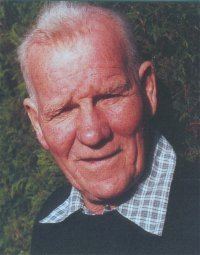Name Duncan Williamson | Role Poet | |
 | ||
Died November 8, 2007, Kirkcaldy, United Kingdom Books The Coming of the Unico, Tales of the seal people, Fireside tales of the Traveller, The Horsieman, Jack and the Devil's Purse | ||
Duncan williamson broken token live 1991
Duncan James Williamson (11 April 1928, Loch Fyneside, near Furnace, Argyll - 8 November 2007) was a Scottish storyteller and singer, and a member of the Scottish Traveller community.
Contents
- Duncan williamson broken token live 1991
- Duncan williamson betsy from pike live 1991
- Books a select list
- Recordings a select list
- References
Both in his native Scotland and around the world, Williamson is remembered as a truly exceptional storyteller. Indeed, the Scottish poet and scholar Hamish Henderson once referred to him as "possibly the most extraordinary tradition-bearer of the whole Traveller tribe." As is noted in his obituary in The Guardian, Williamson was born in a tent on the banks of Loch Fyne, near the village of Furnace in Argyll. While neither his father or mother could read or write, there were pipers, singers, and storytellers on both sides of the family. At a young age Williamson started learning stories from his maternal grandmother. His father was a basketmaker, tinsmith, and scythesman who put in many days each year working as a quarryman on the estate of the Duke of Argyll. Like other Scottish travellers, the Williamson family lived in a fairly large tent during the winter months and took to the roads for the summer, walking from camping place to camping place and picking up seasonal work as they went. Williamson attended the village school in Furnace until, at age fourteen, he was apprenticed to a stonemason and dry stane-dyker. A year later, he left home with an older brother, travelling all over Argyll and Perthshire. He worked as a farm labourer, became a horse dealer, married a distant cousin, and began raising his own family of seven children. His wife, Jeannie Townley, died while they were both still relatively young.
Williamson 's life on the road in his teens and as a young married man is recounted in his oral autobiography, The Horsieman: Memories of a Traveller 1928-1958. From early on he developed a zest for storytelling as well as a love for the conviviality that attends "having a crack" (trading talk with friends or companions). His travels throughout much of Scotland, coupled with his roots in his native Argyll, led to his becoming a treasure-house of Scottish oral lore. His repertory of songs and stories continued to expand throughout his life, particularly after he gained entry to the world inhabited by folklorists by taking part in Scotland's folksong and storytelling revivals during the 1960s, 1970s, and 1980s. A crucial element in this development was his marriage to his second wife, the American-born musicologist Linda Williamson. She became his collaborator as well as the great love of his life, although they later separated. They brought up two children together. It was largely through her that Duncan came into demand as a storyteller in Scottish schools, as well a featured performer at storytelling festivals both in the UK and abroad.
Thanks chiefly to Linda's skill in editing his tape-recorded performances, a number of Duncan's stories came into print during his lifetime. A few audio recordings of his songs and stories have been issued commercially as well. Many more recordings remain in storage in personal or public archives, including the Sound Archive of the Department of Celtic and Scottish Studies at the University of Edinburgh and the Archive of Folk Culture at the Library of Congress, Washington DC.
Williamson was a charismatic figure who made an indelible impact on those who came to know him. His talents as a storyteller are celebrated in several books written by specialists in Scottish tradition and the art of oral narrative, including John D. Niles, author of Homo Narrans (1997); Timothy Neat, author of The Voice of the Bard (2002); Donald Braid, author of Scottish Traveller Tales (2002); and David Campbell, author of a pair of volumes titled A Traveller in Two Worlds.
